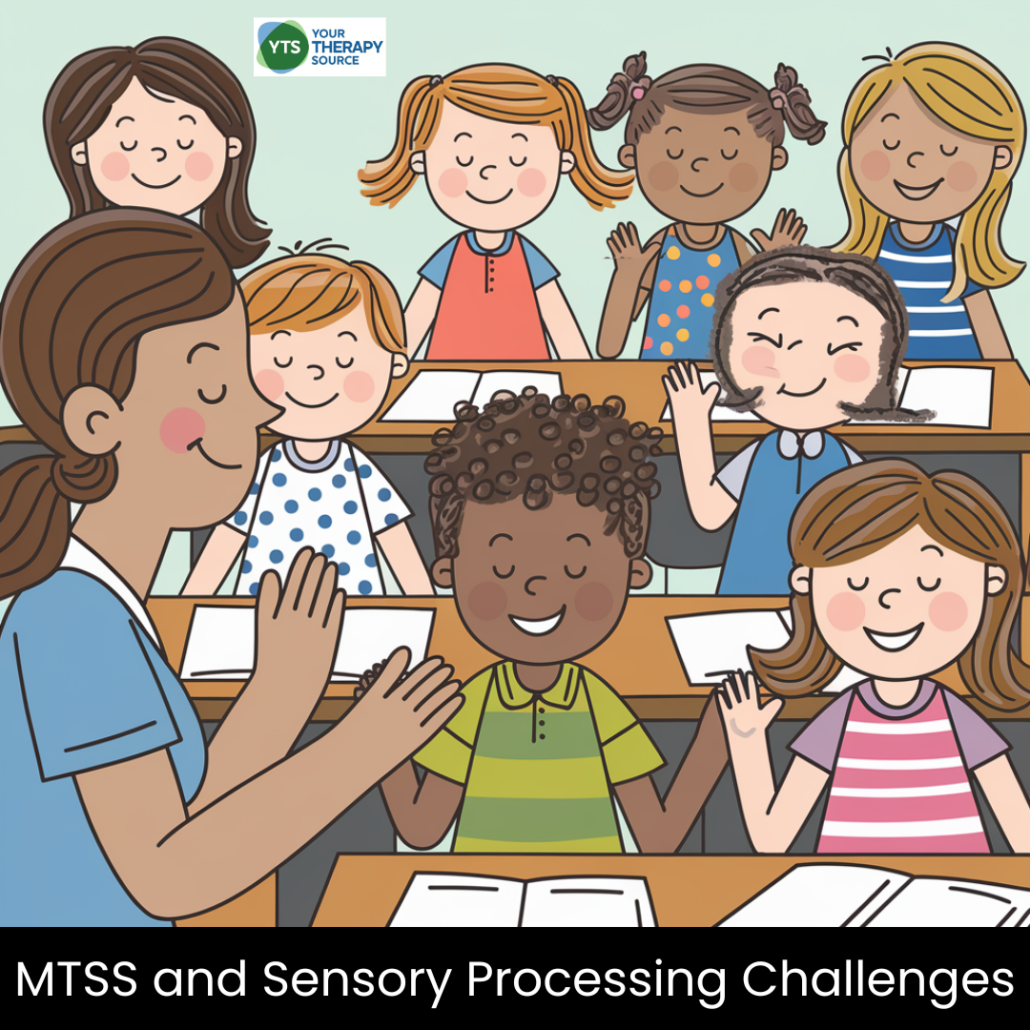MTSS and Sensory Processing Challenges: How Can We Help?
Children with sensory processing challenges often struggle to focus, regulate emotions, or engage in classroom activities, impacting their academic success and social interactions. Multi-Tiered Systems of Support (MTSS) is a framework that helps address these challenges by providing tiered levels of intervention tailored to each student’s needs. By combining sensory, regulation, and relational strategies, MTSS offers a holistic approach to support children with sensory processing differences, fostering inclusion and reducing the need for intensive special education services. Learn more about MTSS and sensory processing challenges, interventions and strategies to help students succeed.
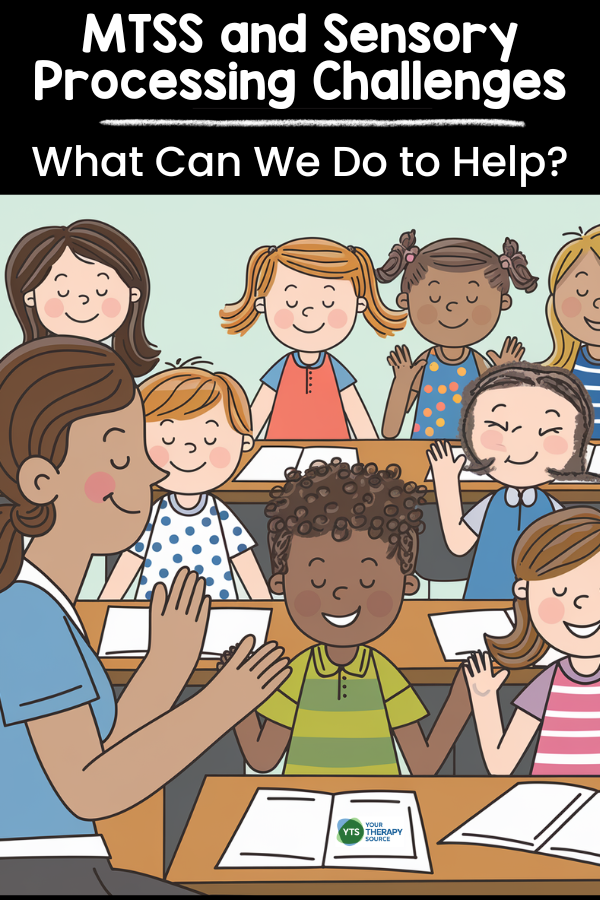
WHAT IS MTSS?
MTSS is a proactive framework used in schools to provide support based on a student’s unique needs. By using MTSS, schools can identify and address challenges early, helping students thrive academically and socially. It includes three tiers of interventions:
- Tier 1: Universal strategies for all students to promote participation and engagement.
- Tier 2: Targeted interventions for small groups or specific students who require additional support.
- Tier 3: Intensive, individualized interventions for students with significant needs.
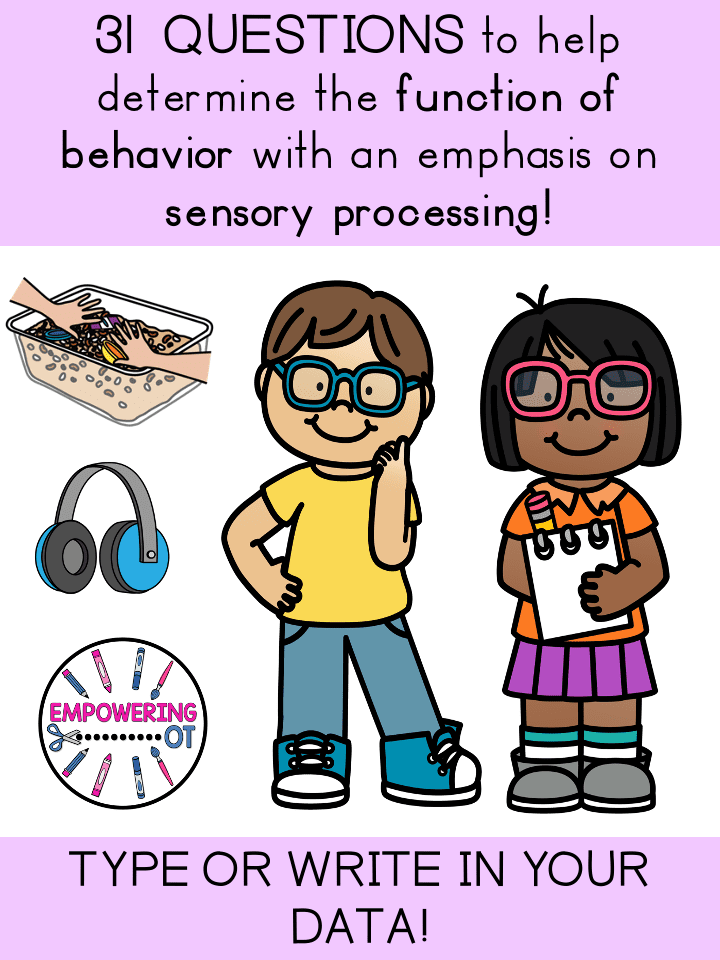
Sensory Behaviors Checklist
HOW CAN MTSS HELP CHILDREN WITH SENSORY PROCESSING CHALLENGES?
Children with sensory processing challenges often experience difficulty responding appropriately to sensory stimuli, leading to issues like disengagement, emotional outbursts, or difficulty completing tasks. This approach ensures that interventions are both responsive and individualized, helping students succeed in school. MTSS provides a structured way to support these children by:
- Creating sensory-friendly environments.
- Offering regulation strategies to enhance focus and emotional balance.
- Building supportive relationships to improve social participation.
SENSORY PROCESSING CHALLENGES THAT MAY BENEFIT FROM MTSS
Every student is unique, and sensory processing challenges can present in a variety of ways. Recognizing these behaviors can help educators and therapists determine when support through MTSS may be beneficial. Below are ten common sensory challenges that might indicate the need for targeted interventions:
- Struggling to Focus
Difficulty maintaining attention during lessons or activities due to sensory distractions or challenges with self-regulation. - Lack of Body Awareness
Students may frequently bump into objects, struggle with personal space, or have difficulty coordinating movements. - Overreaction to Sensory Stimuli
Intense responses to sounds, lights, touch, or smells that others might find neutral or tolerable. - Difficulty with Transitions
Struggling to move between activities or settings, often becoming upset or resistant during changes in routine. - Frequent Movement or Restlessness
A need for constant movement, such as fidgeting, rocking, or leaving their seat, which can disrupt their ability to stay engaged. - Sensitivity to Certain Textures or Materials
Avoidance of certain clothing, school supplies, or classroom materials due to discomfort with textures. - Emotional Outbursts
Difficulty regulating emotions, leading to frequent outbursts or withdrawal in response to sensory challenges. - Avoidance of Group Activities
Reluctance to participate in group settings, often due to sensory overload or difficulty processing social and environmental stimuli. - Low Energy or Lethargy
Appearing tired, disengaged, or unmotivated, which may stem from under-responsiveness to sensory input. - Difficulty Following Directions
Challenges in processing verbal or visual instructions, leading to incomplete tasks or confusion.
These behaviors are often subtle but can significantly impact a student’s ability to engage and succeed in the classroom. By identifying these patterns early, educators and therapists can implement MTSS strategies that address these challenges and support the student’s overall development.
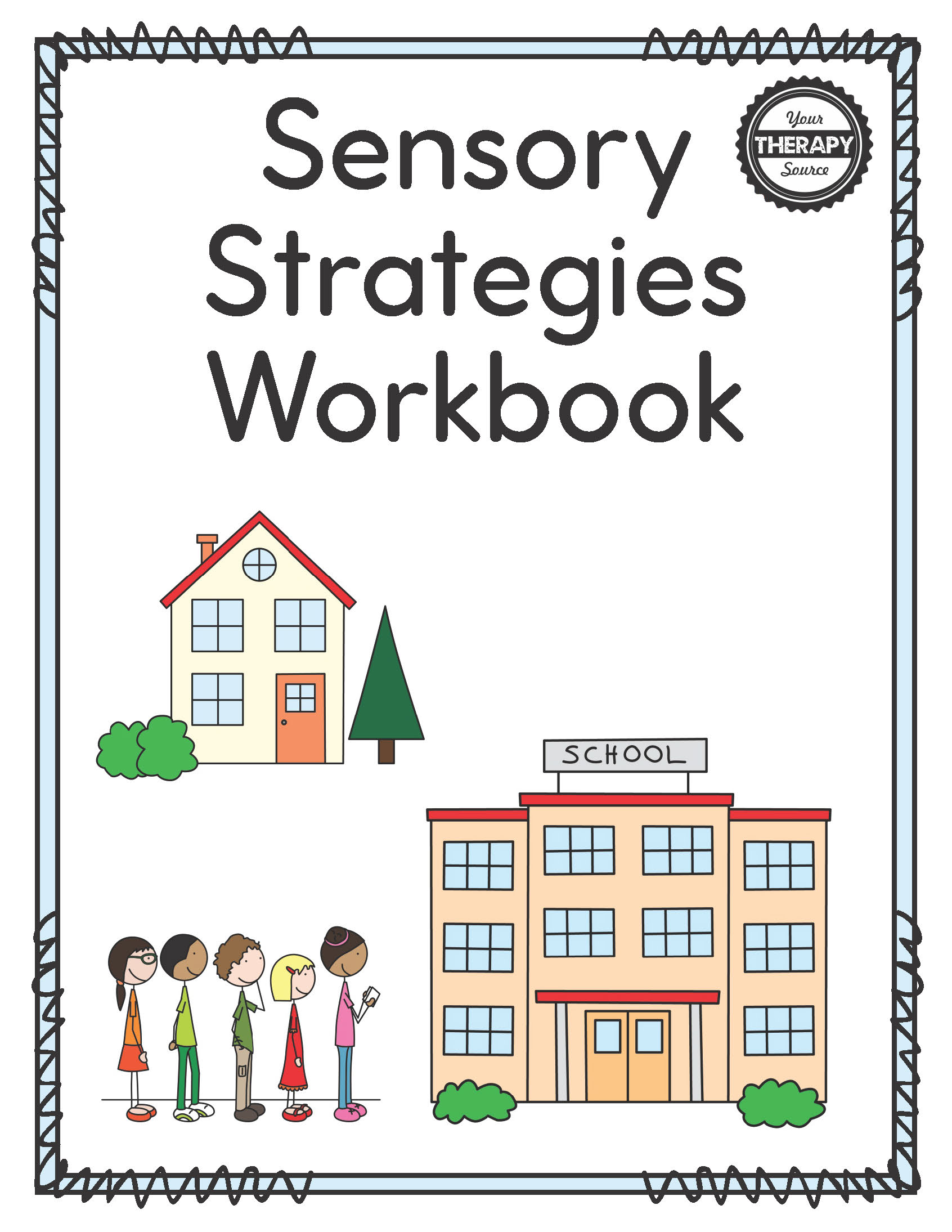
Sensory Strategies Workbook
TIER 1 INTERVENTIONS FOR STUDENTS WITH SENSORY PROCESSING CHALLENGES
Tier 1 focuses on strategies that benefit all students while minimizing barriers. Examples include:
- Incorporating movement breaks and sensory tools into daily routines.
- Creating sensory-friendly environments, such as quiet corners or adjustable lighting.
- Providing universal regulation strategies like mindfulness or deep breathing exercises.
- Educating teachers about sensory processing to build awareness and empathy.
For more ideas, check out Sensory Classroom Ideas for All Students.
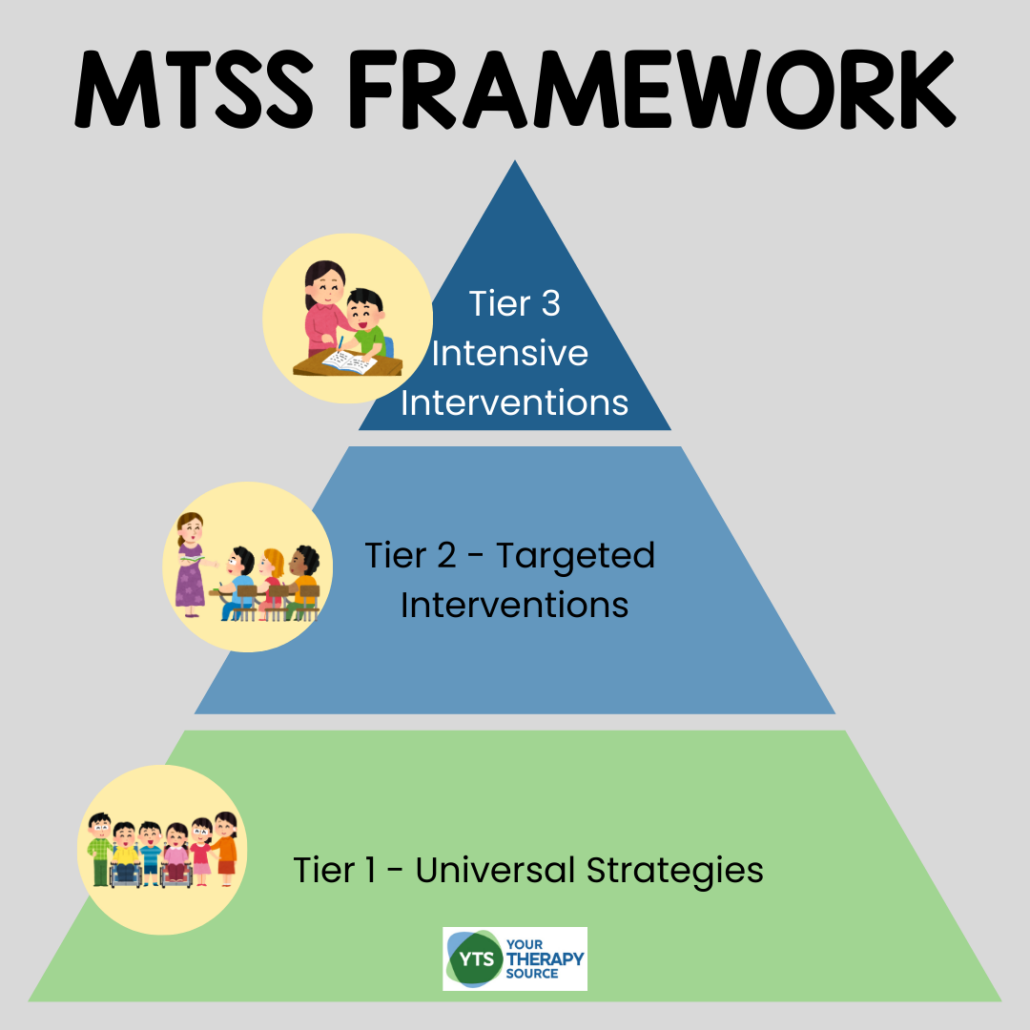
TIER 2 INTERVENTIONS
In Tier 2, support becomes more targeted, addressing the needs of specific students. Examples include:
- Small group activities focused on sensory regulation, like rhythm games or guided stretching.
- Providing sensory tools, such as weighted blankets or fidget kits, tailored to individual needs.
- Collaborating with teachers to create strategies for specific tasks or transitions.
- Using structured observation and feedback to monitor progress.
Learn more about sensory-focused activities in Sensory Integration Exercises.
TIER 3 INTERVENTIONS FOR STUDENTS WITH SENSORY PROCESSING DEFICITS
Tier 3 offers individualized, intensive interventions that address significant sensory processing challenges. These may include:
- One-on-one therapy sessions using sensory integration techniques.
- Developing personalized sensory diets that incorporate calming or alerting activities.
- Embedding sensory supports in daily routines, such as scheduled sensory breaks or specialized seating.
- Collecting detailed data on participation and progress to guide interventions.
To explore sensory supports for specific needs, visit Supporting Sensory Processing in Children with Autism.
Tailoring MTSS Interventions to Sensory Subtypes and Regulation Needs
Children with sensory processing challenges often present with distinct subtypes, such as sensory under-responsivity, over-responsivity, or discrimination challenges. Recognizing these subtypes is critical for designing effective MTSS interventions. Additionally, incorporating multi-dimensional regulation strategies, including co-regulation and self-regulation approaches, ensures holistic support that addresses the sensory, emotional, and relational needs of students.
Understanding Sensory Subtypes
- Sensory Under-Responsivity: These children may appear lethargic, unmotivated, or disengaged. They often require higher intensity or longer exposure to sensory input to respond effectively.
- Interventions: Incorporate activities like heavy work (e.g., pushing, pulling, or carrying) or rhythmic movements (e.g., rocking or bouncing) to increase alertness and engagement.
- Example: Introduce an obstacle course during recess to promote movement and sensory activation.
- Sensory Over-Responsivity: Students in this category may overreact to sensory stimuli, becoming easily overwhelmed by loud noises, bright lights, or certain textures.
- Interventions: Provide calming strategies such as noise-canceling headphones, dimmed lighting, or access to a quiet sensory corner.
- Example: Allow the student to take short breaks in a calm area during high-stimulation activities like group lessons.
- Sensory Discrimination Challenges: These children struggle to process and interpret sensory input accurately, such as difficulty distinguishing between similar sounds or maintaining a steady pencil grip.
- Interventions: Use targeted sensory activities to improve discrimination, such as tactile bins for touch feedback or games that involve sorting and identifying objects.
- Example: Implement classroom tools like pencil grips or textured surfaces to support fine motor skills.
For more information on these subtypes, visit Types of Sensory Processing Disorder.
Incorporating Regulation Strategies
Effective regulation strategies, including co-regulation and self-regulation, play a key role in helping children manage their sensory needs.
Co-Regulation and Self-Regulation Strategies
Co-regulation is the process of providing external support to help children manage their emotions, sensory input, and behavior until they develop the ability to self-regulate. It is particularly vital for younger children or those with significant regulation challenges. Co-regulation relies on a caregiver, teacher, or peer providing a calm, predictable presence to guide the child toward stability. Explore additional ideas in Coregulation Strategies.
Strategies for Co-Regulation
- Modeling Calmness: Use soothing tones, consistent body language, and non-threatening eye contact to create a sense of safety.
- Physical Support: Gentle actions, such as holding a hand or guiding a child to a quiet area, can help reduce overwhelm.
- Empathy and Validation: Acknowledge the child’s feelings and provide affirming statements like, “I see you’re upset. Let’s work through this together.”
Self-regulation refers to a child’s ability to independently manage their sensory or emotional states. Teaching self-regulation involves equipping students with tools and strategies to recognize and respond to their internal cues, fostering independence over time.
Strategies for Self-Regulation
- Emotion Recognition Tools: Provide visual supports like emotion wheels or zones to help children identify their feelings.
- Personalized Sensory Strategies: Encourage the use of sensory supports such as headphones, chewable jewelry, or calming jars when needed.
- Routine Development: Teach routines like “Pause, Plan, Act” to help children navigate challenging moments.
- Goal Setting: Help students set small, achievable goals for managing specific triggers or situations.
EXAMPLE: A STUDENT’S JOURNEY THROUGH MTSS TIERS
Case Overview – Sophia, a first grader, shows signs of sensory over-responsivity. She becomes overwhelmed by loud noises, avoids group activities, and struggles to stay calm during transitions.
Timeline and Interventions
- Weeks 1-4: Tier 1 Interventions
- The occupational therapist works with Sophia’s teacher to implement universal calming strategies like dimming classroom lights and adding a quiet corner.
- The teacher introduces movement breaks for the entire class, such as stretching or breathing exercises every 30 minutes.
- Weeks 5-8: Tier 2 Interventions
- Sophia participates in a small group session twice a week, focusing on sensory regulation through rhythm activities and guided breathing.
- The occupational therapist introduces a personalized sensory toolkit, including noise-canceling headphones and tactile fidgets, to help Sophia manage her environment.
- Progress is monitored weekly using behavior checklists and teacher feedback.
- Weeks 9-12: Tier 3 Interventions
- After continued challenges, Sophia is referred for an evaluation, leading to an Individualized Education Plan (IEP).
- She receives one-on-one therapy twice a week, focusing on sensory integration and co-regulation strategies.
- The therapist collaborates with Sophia’s parents to implement consistent strategies at home and school.
By Week 12, Sophia shows significant improvement in her ability to participate in group activities and transitions. Tier 3 supports are gradually reduced, with Tier 2 strategies maintained.
10 Key Points About MTSS and Sensory Processing Challenges
MTSS as a comprehensive framework for supporting children with sensory processing challenges. By leveraging this approach, educators and therapists can create a more inclusive and supportive learning environment for all students.
- MTSS is Proactive and Holistic
MTSS provides a structured, tiered approach to address sensory, regulation, and relational needs, supporting the whole child and fostering inclusion in the classroom. - Early Identification is Essential
By addressing sensory processing challenges early, MTSS helps prevent academic and social difficulties from escalating, reducing the need for intensive interventions later. - Tiered Support Benefits All Students
MTSS ensures that all students benefit from universal strategies (Tier 1), with targeted and individualized interventions (Tiers 2 and 3) available for those with specific needs. - Sensory Challenges Vary Widely
Common challenges include difficulty focusing, lack of body awareness, sensitivity to sensory input, and struggles with transitions. Recognizing these patterns helps determine when MTSS interventions are needed. - Collaboration is Key
Effective MTSS implementation relies on collaboration among educators, therapists, and families to ensure strategies are consistent across school and home settings. - Data Collection Guides Decisions
Regular progress monitoring using tools like checklists, observation logs, and feedback loops ensures that interventions are effective and responsive to the student’s needs. - Environment Matters
Sensory-friendly environments, such as quiet spaces and adaptable lighting, play a critical role in supporting students with sensory processing challenges. - Regulation Strategies are Essential
Co-regulation and self-regulation strategies help students manage sensory input and emotions, promoting independence and resilience over time. - Tailored Support for Sensory Subtypes
Recognizing sensory subtypes (e.g., under-responsivity, over-responsivity, and discrimination challenges) allows educators to design effective and individualized interventions. - MTSS Promotes Inclusion and Success
By addressing sensory processing challenges through tiered interventions, MTSS helps students participate fully in academic and social activities, enhancing their overall success and well-being.
REFERENCE
Whiting, C. C., Ochsenbein, M., Schoen, S. A., & Spielmann, V. (2022). A multi-tiered and multi-dimensional approach to intervention in schools: Recommendations for children with sensory integration and processing challenges. Journal of Occupational Therapy, Schools, & Early Intervention, 15(3), 314-327.
